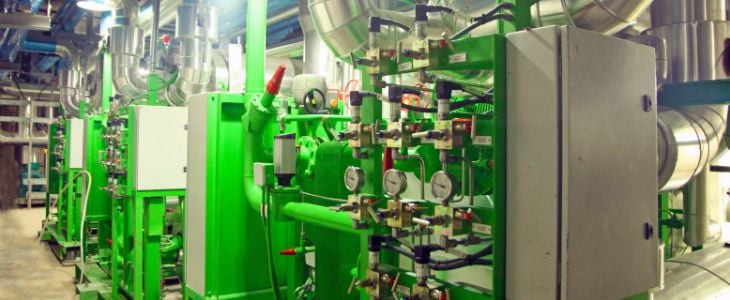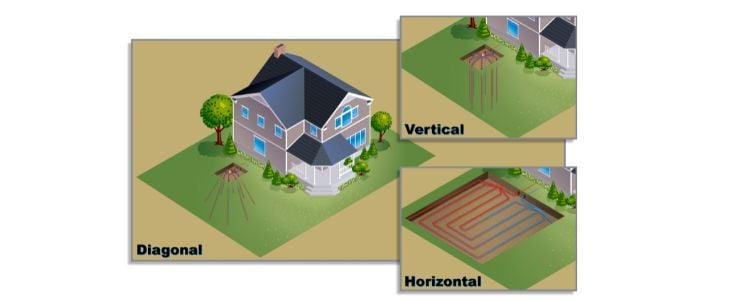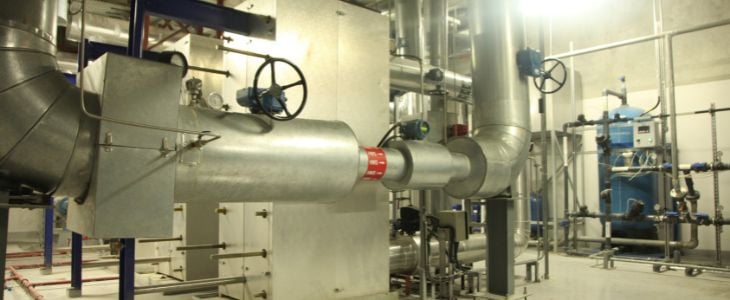In the midst of a global crisis around obtaining reliable and economical energy, geothermal energy offers a hopeful alternative.
A renewable, clean energy, geothermal power represents a viable alternative for cities’ efforts to minimize pollution and achieve carbon neutrality.
In fact, combined with efficient technology such as heat pumps, the uses of geothermal energy include the generation of extremely efficient, decarbonized 5th generation district heating and cooling structures.
But what exactly is geothermal energy, how does a geothermal system work and what are the main benefits of a geothermal heat pump? All in all, what makes geothermal power a key player for sustainable heating and cooling?
From our experience in district energy, at Araner we share the key aspects of geothermal energy and its present and future uses.
What is geothermal energy
Geothermal energy is a type of thermal energy generated and stored within the Earth’s crust in the form of steam and water.
Caused by the planet’s high temperature and pressure, its origin is in the planet’s own formation and materials that are in a radioactive decay state.
Geothermal energy is renewable and clean, two reasons which have turned it into a valuable energy source that is increasingly sought after for electricity generation and beyond. The IEA reports geothermal capacity additions averaged 500 MW per year in the last five years (Turkey, Indonesia and Kenya leading the way).
How does geothermal energy work
In order to put geothermal energy to work, the most common method is to access the naturally-occuring geothermal pools located underground.
These are not located all across the globe, but typically occur in areas where volcanic activity, hot springs or geysers are commonly found.
In order to be considered as functional geothermal sources, these water and steam sources must be between 300ºF and 700ºF.

From there, a geothermal system may utilize geothermal energy in multiple ways.
One of the most common uses is to use geothermal energy as a source for industrial or large-scale heat pumps.
These systems are then in charge of converting the energy into heated water or heated buildings. When powered by geothermal energy, they become highly-efficient, clean heating sources, but geothermal energy can also become a cooling energy source.
Other uses of geothermal energy include its employment as a source of direct power as well as a variety of industrial and commercial applications.
Types of geothermal energy
Geothermal energy used in power plants
Sourced directly from the Earth’s underground, geothermal energy used in specific power plants is employed the following way:
- A well must be drilled in order to surface steam or hot water. They’re typically 1 or 2 miles deep into the Earth
- Hot water is pumped from the well under high pressure levels, which descend when water reaches the surface. Consequently, water turns into steam
- A turbine is spinned thanks to this steam
- A generator connected to the turbine turns this energy into electricity
- A circular process is achieved when the steam is cooled off. It turns into a liquid state again, so that this water can be pumped back into the Earth
High-quality heat can be obtained following this process, which may be used later for district energy projects or electricity generation, among other uses.

Geothermal heat pumps
Geothermal heat pumps represent a different use of this sort of energy.
In this case, it is a source of energy for the heat pumps themselves, which then are able to convert this constant thermal energy into heating and cooling for buildings, among other uses such as industrial applications.
As such, geothermal energy becomes an alternative to other potential power sources for heat pumps but which may be less efficient, including air-based thermal energy.
In order to make use of geothermal heat pumps, these systems work through underground loop pipes in which water or a refrigerant are circulated:
- In winter, this water or refrigerant is in charge of absorbing the constant warmth produced underground. When it heats up, it’s then pumped into the surface, and is thus able to transfer the heat into the building.
- Geothermal heat pumps may also work in summer and provide cooling by running in reverse. This means the water or refrigerant that runs through the pipes is in charge of absorbing heat from the surface and then pumps it underground, transferring the extra heat.
Using geothermal energy for powering heat pumps (a process also known as geo exchange) thus becomes a highly efficient and clean alternative to generate heating and cooling energy, making the most of this naturally-occurring, constant energy source.
Paired with innovative heat waste recovery structures, this type of system is leading the way for the efficient and sustainable heating and cooling needed for climate action, as well as the development of truly sustainable smart cities.
Additionally, it not only represents a sustainable heating technology, but also one that brings in high-quality heat.

Araner: geothermal energy and district heating and cooling
When available, the use of geothermal energy is helping push the rise in district heating and district cooling structures.
Moving away from fossil fuels, current state-of-the-art heat pumps mean the possibility of incorporating clean, renewable energy sources is already a reality.
These not only generate a less harmful environmental impact: they’re also a positive economic investment that facilitates the generation of healthy, green and circular economies around locally-available energy sources.
Their efficiency is further motivated by district energy structures’ capacities to match energy demand and production, thus eliminating unnecessary waste.
All in all, district heating and cooling structures are facilitating the aligning between rising energy demand in urban areas as well as improving their sustainability by implementing more efficient heating and cooling models.
When designing district energy structures, the choice of energy sources is key to accessing all these benefits: only through the right choice is it possible to make the most of this source’s sustainable and economical advantages.
This is where geothermal heat pumps come in: when geothermal energy sources are available, combining them with industrial or large-scale heat pumps brings in:
- Enduring efficiency, verified by this system’s coefficient of performance (or COP). This measures the ratio between how much electrical energy a system consumes compared to how much heating energy it’s able to generate.
When COP values are compared, industrial heat pumps stand out as the most efficient system for district heating projects.
For instance, electrical boilers used in district heating and cooling yield a COP of 1. On the other hand, industrial heat pumps present a COP of between 3 and 6 units. That means a well-adjusted heat pump can deliver between 3 to 6 times more heat output than the electric input it employs.
Additional data validates the choice of heat pumps. For instance, the US Energy department has determined that ducted air-source heat pumps can reduce electricity use for heating by approximately 50% compared to other alternatives.
Considering how geothermal power is a more reliable and constant source of energy than air, these outstanding values will be even more extraordinary if heat pumps align with geothermal energy.
All in all, a large-scale heat pump remains the most efficient and sustainable, especially if they’re paired with geothermal energy when available.
Are you looking for an efficient way to make the most of geothermal energy?
At Araner we provide reliable, modern and customized district heating and district cooling to help developers make the most of these sustainable energy sources and advance towards outstanding energy efficiency.
Download our District Heating Reference book to learn more about district energy sources or get in touch with us and see how we can help you.










